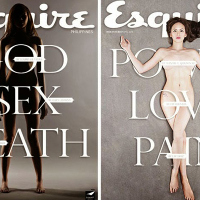While Sweden has been making history in the world of recycling its trash, The Philippines has been struggling to upgrade their solid waste management system due to low budgets and lack of expertise. The small nation of Sweden was already ahead of the game since 2012. Back then it was only 96% of their trash and the remaining 3% moved up in just two years. Now that is impressive.
Their aggressive recycling policy goes in an order of importance: Prevention, reuse, alternatives and disposal in landfill. This year, only 1% of their waste goes to the landfill.
Meanwhile, Frances Estrada Arcadio took to Facebook to vent her frustrations and disappointments over trash in front of JP Morgan Building in Bonifacio Global City.
On her Facebook account she wrote:
Infront of JP Morgan bldg. May tumubong bagong mga bulaklak - coffee cups at cigarette butts ang tawag. Tanim ng mga taong ismarte manamit, inglisero at inglisera, matatalino daw pero mga wala naman pakundangan at malasakit sa kalikasan. Saka magrereklamo kapag binaha. Nakakalungkot lang isipin dahil sa kapwang nagpapanatili ng kalinisan wala din silang pakealam sa pinagpaguran.
Fort Bonifacio has completely changed the game in terms of urban development in Metro Manila. In your first visit to the Fort, the one thing you’d ever notice is how the place is so different than the the central business districts in Makati, Ortigas, Quezon City and Manila. Because of these things, BGC has fully become the place to do business in by government offices, private companies, and startups.
A city’s clean image is directly linked to how the city manages its waste. Visitors have observed the ample number of colorful trash cans in several public locations in the city. Since all of the buildings in the area are owned by developers, a proper waste management program is usually in place to ensure that trash does not destroy the clean image of BGC.
But in reality, the greatest challenge really is how to discipline the people.
Photo credit: © Frances Estrada Arcadio











![[WATCH] Piolo's son, Iñigo Pascual topbills ‘Relaks, It’s Just Pag-ibig’ Movie](../thedigitalspy.com/wp-content/uploads/2014/08/Screen-Shot-2014-08-07-at-8.02.38-PM.png)






